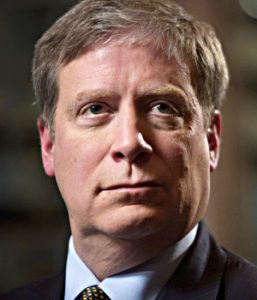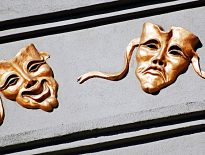Stanley Druckenmiller – Top-Down Investing

Today’s post is a profile of Guru investor Stanley Druckenmiller, who appears in Jack Schwager’s book New Market Wizards. His chapter is called The Art of Top-Down Investing.
Contents
Stanley Druckenmiller
Stanley Druckenmiller is famous for taking over the multibillion-dollar portfolio of the Quantum Fund from his mentor George Soros.
He appears in Jack Schawger’s book “New Market Wizards”.
- His chapter is called The Art of Top-Down Investing
Career summary
Druckenmiller skipped graduate school to get a real job, and joined the Pittsburgh National Bank as a management trainee.
Most of the people who entered the management training program wanted to be a loan officer. The head of the loan department said I would make a terrible loan officer.
I was too interested in the functioning of the companies, and too abrupt for what was essentially a sales position.
Instead, Druckenmiller started out as a stock analyst, and after a year he was promoted to Director of equity research.
- After another year he took over from the manager who had promoted him.
Two years later after that, in 1980 (aged 28) he launched his own firm – Duquesne Capital Management.
- In 1986, he joined Dreyfus as a fund manager, but kept the Duquesne Fund running.
His Strategic Aggressive Investing Fund was the best-performing fund in the industry from inception (March 1987) until he left Dreyfus in August 1988 to join George Soros at the Quantum fund.
- Then after the Berlin wall came down in 1989, Soros left to help Eastern Europe become more capitalist.
So in just over a decade, Druckemiller went from management trainee to running a $2 bn fund for Soros.
- That’s quite a career track.
Performance
At the time of his interview with Schwager, Druckenmiller had only been managing the Quantum fund for three years, but he had returned 38% pa on between $2 bn and $3.5 bn.
- The Duquesne fund was up 37% pa over more than a decade.
Since he switched from stocks to his current eclectic style of long and short, multi-asset (bonds, currencies, and stocks) he was up 45% pa.
- And at the time of the interview, he was still in his thirties.
Drelles
Schwager starts by asking about Pittsburgh National Bank.
The director of investments was Speros Drelles- brilliant but also eccentric.
When he promoted me I was twenty-five, my exiting boss was 50 and all the other analysts had MBAs and had been in the department longer than me.
He said: “You know why I’m doing this, don’t you? For the same reason they send eighteen-year-olds into war – they’re too dumb to know not to charge.”
Drelles expected a “huge, liquidity-driven bull market” and felt he had too many scars to make the most of it.
When I first started out, I did very thorough papers covering every aspect of a stock or industry. The research director said “This is useless – what makes the stock go up and down?”
That was a spur for me to identify the factors that were strongly correlated to price movement. Usually it was earnings, though in chemical stocks it’s capacity.
The time to buy the chemical stocks is after a lot of capacity has left the industry and there’s a catalyst to increase demand.
Sell when there are lots of announcements for new plants. Earnings will go down in two to three years, and the stock market tends to anticipate.
Drelles also got Druckenmiller into technical analysis.
I found that technical analysis could be very effective.
Drelles soon left, and Druckenmiller made a big bet on oil and defense stocks when the Shah of Iran was overthrown.
At the time, I didn’t yet understand diversification. Now I would never even dream of putting 70% of a portfolio in oil stocks.
This portfolio massively outperformed the S&P 500, and nine months later, Druckenmiller got Drelles’s old job.
Duquesne
After a presentation in New York, an audience member offered Druckenmiller $10K a month to start his own firm and act as a consultant.
- Even after two promotions his salary was only $48K pa, so this was serious money.
He started Duquesne Capital Management, with $1 M under management, generating just $10K per year in fees.
He began well, but despite feeling very bearish in mid-1981 he only went to 50% cash.
- He lost 12% in the the 3rd quarter.
Right then and there, we changed our investment philosophy so that if we ever felt that bearish about the market again we would go to 100% cash.
Then in 1982, Druckenmiller’s $10K a month consulting client went bust.
- His expenses were $180K pa and with $7M under management, fees were only $70K pa.
He put the company’s $50K in assets into T-bill futures, convinced that interest rates were coming down.
In four days, I lost everything. Less than a week after we went bust, interest rates hit their high for the entire cycle. They’ve never been that high since.
That was when I learned that you could be right on a market and still end up losing if you use excessive leverage.
Druckemiller went to a client he had made money for and sold him 25% of the firm for $150K.
One month later, the bull market began, and within about a year, our assets under management climbed to $40M.
The 1987 crash
In June 87 I changed my stripes. The dividend yield was down to 2.6 percent and the price/book value ratio was at an all-time high.
But I never use valuation to time the market. I use liquidity and technical analysis. Valuation only tells me how far the market can go once a catalyst changes the market direction.
My technical analysis showed that the breadth wasn’t there – the market’s strength was concentrated in the high capitalization stocks, making the rally look like a blow-off.”
The catalyst was liquidity. The Fed had been tightening since January 1987, and the dollar was tanking, which suggested that they were going to tighten some more.
My five funds were up between 40% and 85% for the year. Many managers will book their profits when they’re up a lot early in the year. It’s my philosophy, reinforced by Mr. Soros, that you should be aggressive.
Druckenmiller – who was already talking to Soros while working for Dreyfus – went short and held for a couple of months, fighting the market.
- By mid-October the market was falling and the short position was in profit.
That’s when I made one of the most tragic mistakes of my entire trading career. The chart suggested that there was tremendous support near 2,200 based on a trading range that had been built up during most of 1986.
I went from net short to a 130% long the day before the crash. My plan was to give the long position a half-hour on Monday morning and to get out if the market failed to bounce.
That Friday afternoon after the close, I happened to speak to Soros. He showed me a study done by Paul Tudor Jones that demonstrated the historical tendency for the stock market to accelerate on the downside whenever an upward-sloping parabolic curve had been broken.
The analysis also showed the extremely close correlation in the price action between the 1987 stock market and the 1929 stock market.
Druckenmiller’s boss, Jack Dreyfus had also – despite 20 years out of the market – become concerned about the similarities to 1929.
- He thought that margin buying activity was now going into S&P futures rather than stocks.
Sadly the analysis to check that completed on the Friday afternoon that Druckenmiller went long – two months after Dreyfus expressed concerns.
- They found that speculators had been short until July, and then had gone increasingly long.
Druckenmiller made plans to sell on the Monday morning, but the market opened more than 200 points lower. He sold on a brief bounce and went short.
- It turned out that Dreyfus had personally hedged and then gone short two months earlier.
Soros
George Soros had become my idol. He seemed to be about twenty years ahead of me in implementing the trading philosophy I had adopted: holding a core group of stocks long and a core group of stocks short and then using leverage to trade S&P futures, bonds, and currencies.
George Soros is the greatest investor that ever lived. He would make recommendations and I would be intimidated. But you can’t have two cooks in the kitchen; it doesn’t work.
In August 1989 he sold out a bond position that I had put on. We had our first let-it-all-out discussion and he said he was going to stay out of my hair for six months.
Then the Berlin Wall came down, and Soros left to convert Eastern Europe from communism to capitalism.
The Deutsche mark
I was so bullish on the Deutsche mark because of a radical currency theory proposed by George Soros in his book, The Alchemy of Finance.
His theory was that if a huge deficit were accompanied by an expansionary fiscal policy and tight monetary policy, the country’s currency would actually rise.
The dollar provided a perfect test case in the 1981-84 period. At the time, the general consensus was that the dollar would decline because of the huge budget deficit. However, because money was attracted into the country by a tight monetary policy, the dollar actually went sharply higher.
When the Berlin Wall came down, it was clear that West Germany was about to run up a huge budget deficit to finance the rebuilding of East Germany. At the same time, the Bundesbank was not going to tolerate any inflation.
I went headlong into the Deutsche mark. It turned out to be a terrific trade.
Druckenmiller bet $2 bn on the mark.
Gulf war
I came into 1991 with positions that couldn’t have been more poorly suited to the market moves. I was short $3 bn in the U.S. and Japanese stock markets, and I was also heavily short in the U.S. and world bond markets.
The pessimism regarding the U.S. stock market had become extreme. Everybody was talking about how the market would crater if the United States went to war against Iraq.
But the breadth was not there. Even though the Dow Jones index had fallen to a new recent low, only about eighty of the seventeen hundred New York Stock Exchange stocks had made new lows.
I was convinced that once the war started, the market had to go up, because everyone had already sold.
Philosophy
The way to build long-term returns is through preservation of capital and home runs. You can be far more aggressive when you’re making good profits.
Many managers, once they’re up 30 or 40 percent, will book their year [trade very cautiously]. The way to attain superior long-term returns is to grind it out until you’re up 30 or 40 percent, and then if you have the convictions, go for a 100 percent year.
It’s not whether you’re right or wrong that’s important, but how much money you make when you’re right and how much you lose when you’re wrong.
When you have tremendous conviction on a trade, you have to go for the jugular. It takes courage to be a pig. It takes courage to ride a profit with huge leverage. As far as Soros is concerned, when you’re right on something, you can’t own enough.
Soros is also the best loss taker I’ve ever seen. He doesn’t care whether he wins or loses on a trade. If a trade doesn’t work, he’s confident enough about his ability to win on other trades that he can easily walk away from the position.
There are a lot of shoes on the shelf – wear only the ones that fit.
The wonderful thing about our business is that it’s liquid, and you can wipe the slate clean on any day. As long as I’m in control of the situation – I can cover my positions – there’s no reason to be nervous.
Conclusions
This is very much a “war stories” chapter from Schwager.
- I’ve kept a lot of what Druckenmiller said because he’s a clear and relatively entertaining speaker.
I can also understand why Schwager would be impressed by Druckenmiller.
- He runs an enormous fund, and he has glamour by association from his connection with Soros.
But there’s not much that’s of direct help to the private investor.
- I’m unlikely to be putting on $2 bn currency positions in the near future.
And given my pot size and position along the investing journey, I don’t have much opportunity to hit “home runs” (or to “be a pig”, as Druckenmiller calls it).
- Leverage is not on my agenda, except when hedging, shorting or buying momentum stocks that have stratospheric PEs.
The one thing that Schwager highlights which hits home is Druckenmiller’s ability to switch sides when he is wrong.
- After getting the 1987 crash dead wrong, he went short on the Monday morning and ended the month ahead.
- His ability to avoid anchoring to his original analysis is excellent.
It has to be added that Druckenmiller’s story, whilst very much at the extremes of investing experience, is not that inspiring.
Though obviously gifted and very entrepreneurial, he also seems to have had the knack of being in the right place at the right time.
- He got two big steps up in his career when talented and inspirational mentors encouraged him, and then stood aside to give him their job.
- He was also encouraged (and funded) by a stranger to start his own firm, and then bailed out by a client when he messed up.
I can only stare in envy, having had literally dozens of useless bosses and almost zero encouragement during my own career.
Until next time.

